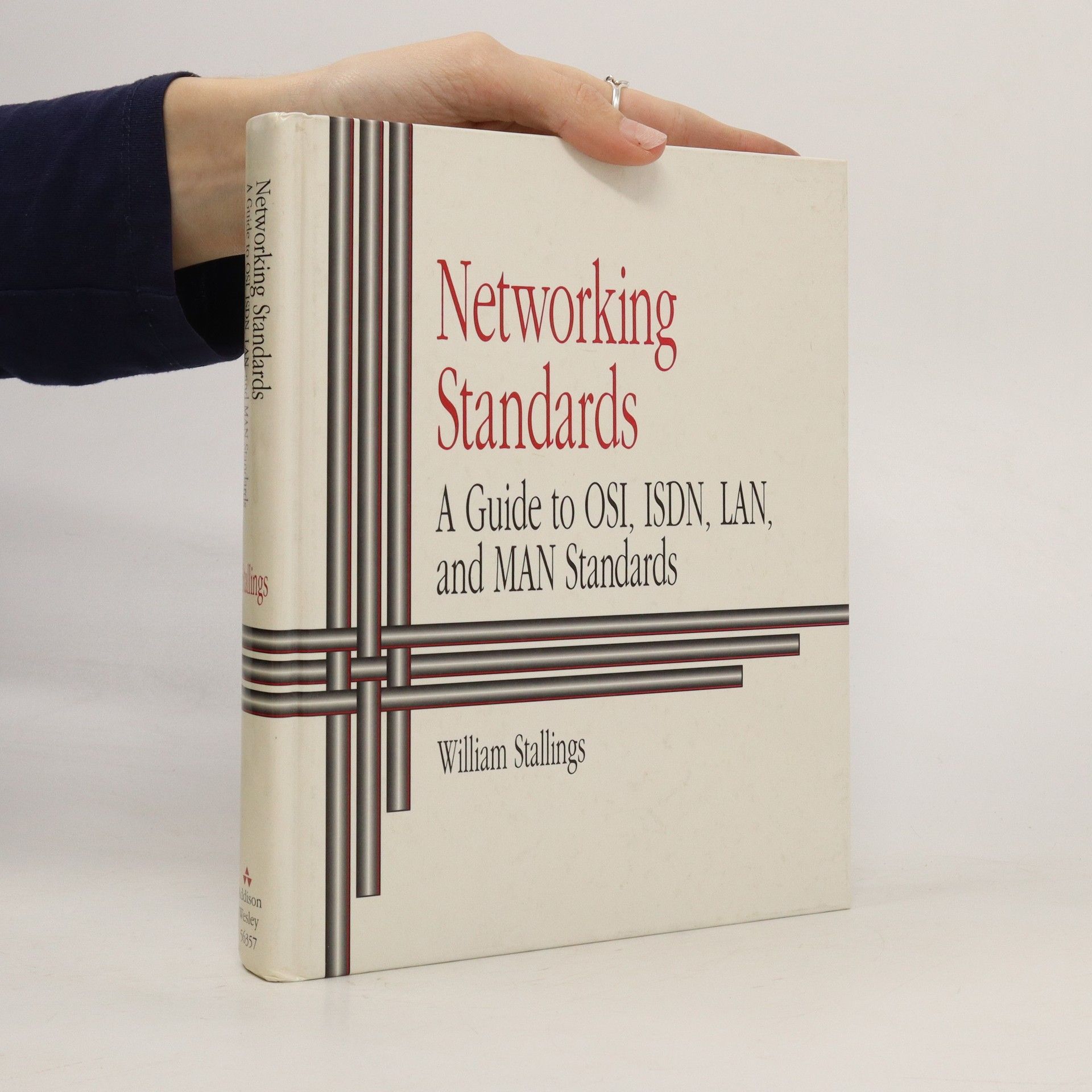Like its predecessors, this fully updated fifth edition provides a clear, comprehensive presentation of LAN/MAN technology and the many emerging approaches to high-speed local networking. It meets the needs ot today's readers by emphasizing both the fundamental principles as well as the critical role of performance in driving LAN/MAN design.
William Stallings Livres






For one- or two-semester undergraduate courses in operating systems for computer science, computer engineering, and electrical engineering majors An introduction to operating systems with up-to-date and comprehensive coverage Now in its 9th Edition, Operating Systems: Internals and Design Principles provides a comprehensive, unified introduction to operating systems topics aimed at computer science, computer engineering, and electrical engineering majors. Author William Stallings emphasises both design issues and fundamental principles in contemporary systems, while providing readers with a solid understanding of the key structures and mechanisms of operating systems. He discusses design trade-offs and the practical decisions affecting design, performance and security. The text illustrates and reinforces design concepts, tying them to real-world design choices with case studies in Linux, UNIX, Android, and Windows 10. With an unparalleled degree of support for integrating projects into the course, plus comprehensive coverage of the latest trends and developments in operating systems, including cloud computing and the Internet of Things (IoT), the text provides everything students and instructors need to keep pace with a complex and rapidly changing field. The 9th Edition has been extensively revised and contains new material, new projects, and updated chapters.
This book is the definitive guide to SNMP-based network and internetwork management for network administrators, managers, and designers. Concise, focusing on practical issues, and completely up to date, it covers SNMPv1, SNMPv2, and the most recent SNMPv3, as well as RMON1 and RMON2 - all of which are currently deployed in LANs and WANs. With this book, you will be better equipped to determine your network management needs, gain insight into design issues, and obtain the necessary understanding to evaluate available SNMP-based products. The author presents helpful background information, including an overview of network management requirements and an explanation of fundamentals such as network management architecture; performance, fault, and accounting monitoring; and configuration and security control.
Wireless Communications & Networks
- 596pages
- 21 heures de lecture
For one-semester, undergraduate/graduate-level courses in Advanced Networking, Wireless Communications, Wireless Data Communications, and Wireless Technology, in departments of Electrical Engineering, Computer Science, Information Science, and Computer Engineering. This comprehensive, well-organized text covers wireless communication and networks, and the rapidly growing associated technologies the most exciting areas in the overall communications field. It explores the key topics in the following general categories: technology and architecture, network type, design approaches, and applications. An emphasis on specific wireless standards reflects the importance of such standards in defining the available products and future research directions in this field. *Coverage of basic networking concepts in Part One and Appendices - appropriate for students with little or no background in data communications. *Consistent discussion of technology and architecture - illustrates how a small collection of ingredients - including frequency band, signal encoding techniques, error correction technique, and network architecture - characterize and differentiate wireless communication and networking
Cryptography and Network Security
- 696pages
- 25 heures de lecture
For one-semester undergraduate/graduate level courses and for self-study. William Stallings offers a practical survey of both the principles and practice of cryptography and network security, reflecting the latest developments in the field.
Major changes in networking standards in the last seven months will change the roles of computer communications for the next five years. Stallings waited for the actual revised ANSI standard, and has detailed only the important changes that every network user and administrator needs to know.
This book serves as a practical, up-to-date, and comprehensive survey of network-based and Internet-based security applications and standards -- and as a valuable reference or tutorial.It offers a large section on the discipline of cryptography -- covering algorithms and protocols underlying network security applications, encryption, hash functions, digital signatures, and key exchange. Other topics include IP, web, and network management security, firewalls, and intruders and viruses.
Computer Security. Principles and Practice
- 798pages
- 28 heures de lecture
In recent years, the need for education in computer security & related topics has grown dramatically & is essential for anyone studying computer science or computer engineering. This text provides integrated, comprehensive, up-to-date coverage of the broad range of topics in this subject.
This textbook provides a comprehensive overview of the technology and standards of ISDN and broadband ISDN, with emphasis on frame relay and ATM. It presents ISDN in detail, including services, technology, and interfaces, and covers the latest standards such as the ITU-T Recommendations and the Frame Relay Forum specifications. Also covered is the key technology of frame relay, which examines frame relay protocols and services as well as frame relay congestion control. Equally comprehensive treatment is given to broadband ISDN, including the latest standards such as the ITU-T recommendations and the ATM Forum specifications. The book also devotes key sections to discussion of asynchronous transfer mode (ATM) and to examination of protocols, services, the ATM Adaption Layer (AAL), and ATM traffic and congestion control.



